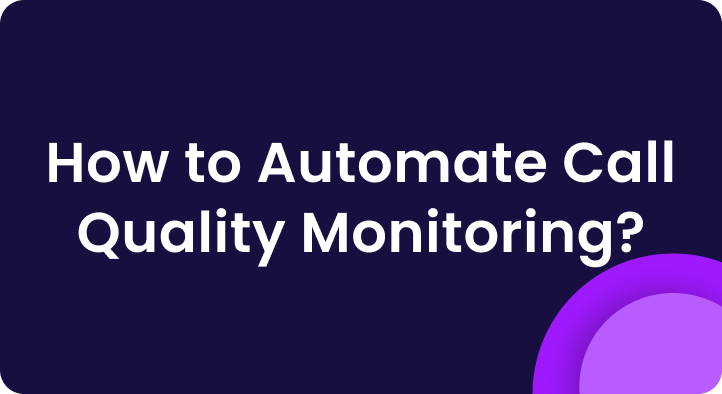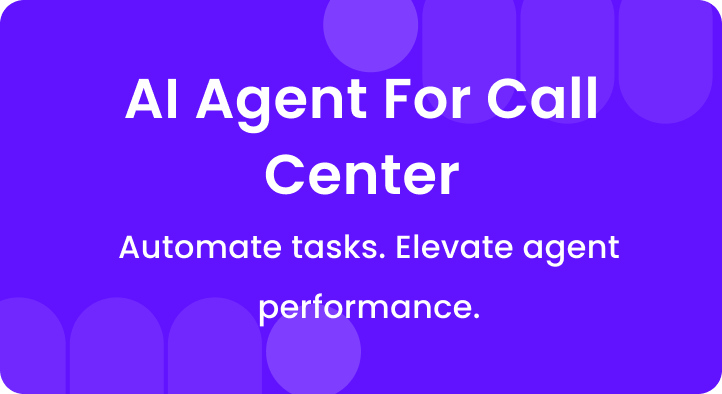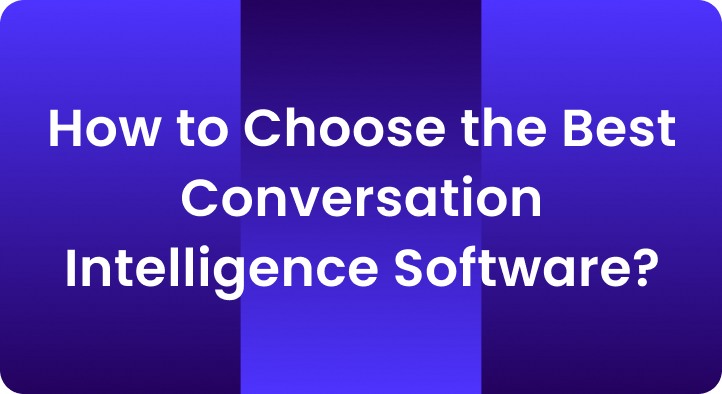For decades, contact centers have relied on a patchwork of systems – a CRM here, a call system there, a ticketing platform somewhere else.
While these systems were critical to keeping operations running, they were never built to think.
As customer expectations have risen – demanding faster, more personalized, and proactive support – the traditional contact center stack has started to crack under pressure.
The future belongs to contact center AI that don’t just store and engage – but those that understand, predict, and act.
This future is powered by Artificial Intelligence.
Table of Contents
A. The traditional contact center stack
Before we discuss AI, let’s first understand how contact centers were traditionally structured. Typically, three types of systems form the backbone:
1. System of Record (SoR)
The SoR is where important data about customers and interactions is stored.
Examples include CRM platforms like Salesforce, Freshdesk, and ticketing systems like Zendesk.
Purpose: Store facts – names, purchase history, complaints, call records.
2. System of Communication (SoC)
The SoC handles real-time or asynchronous interactions with customers – voice, email, chat, or SMS.
Examples include Twilio (voice), Intercom (chat), or WhatsApp Business.
Purpose: Enable conversations between agents and customers.
3. System of Operations
These systems manage internal processes – agent scheduling, call routing, quality assurance sampling.
Solutions like Enthu enhance these operations by automating quality monitoring and surfacing actionable insights.
Purpose: Ensure the contact center workforce and workflows are running smoothly.
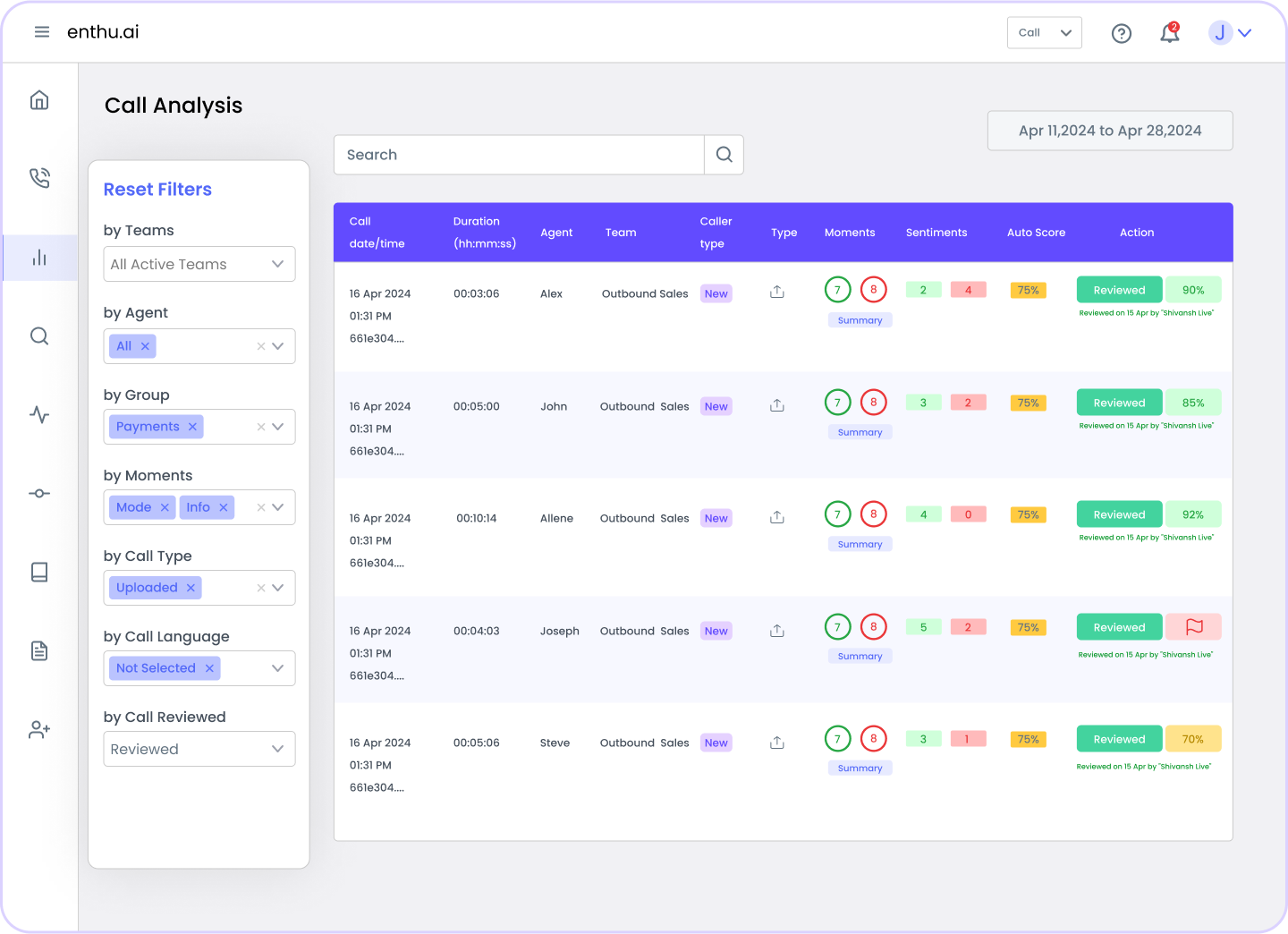
B. The pain points of disjointed systems
While each system is critical, they often operate in silos.
This leads to some of the biggest operational pain points:
- Siloed data: Information about the same customer exists in multiple places without context.
- Loss of continuity: An agent answering a call has no idea the customer complained yesterday via chat.
- Reactive support: Contact centers typically solve problems after they escalate – not before.
- Limited QA: Only 2–3% of customer interactions are manually reviewed for quality.
- Agent Fatigue: Switching between 6–8 different tools for every interaction increases agent stress and errors.
The result?
Frustrated customers, burned-out agents, and missed opportunities for service excellence.
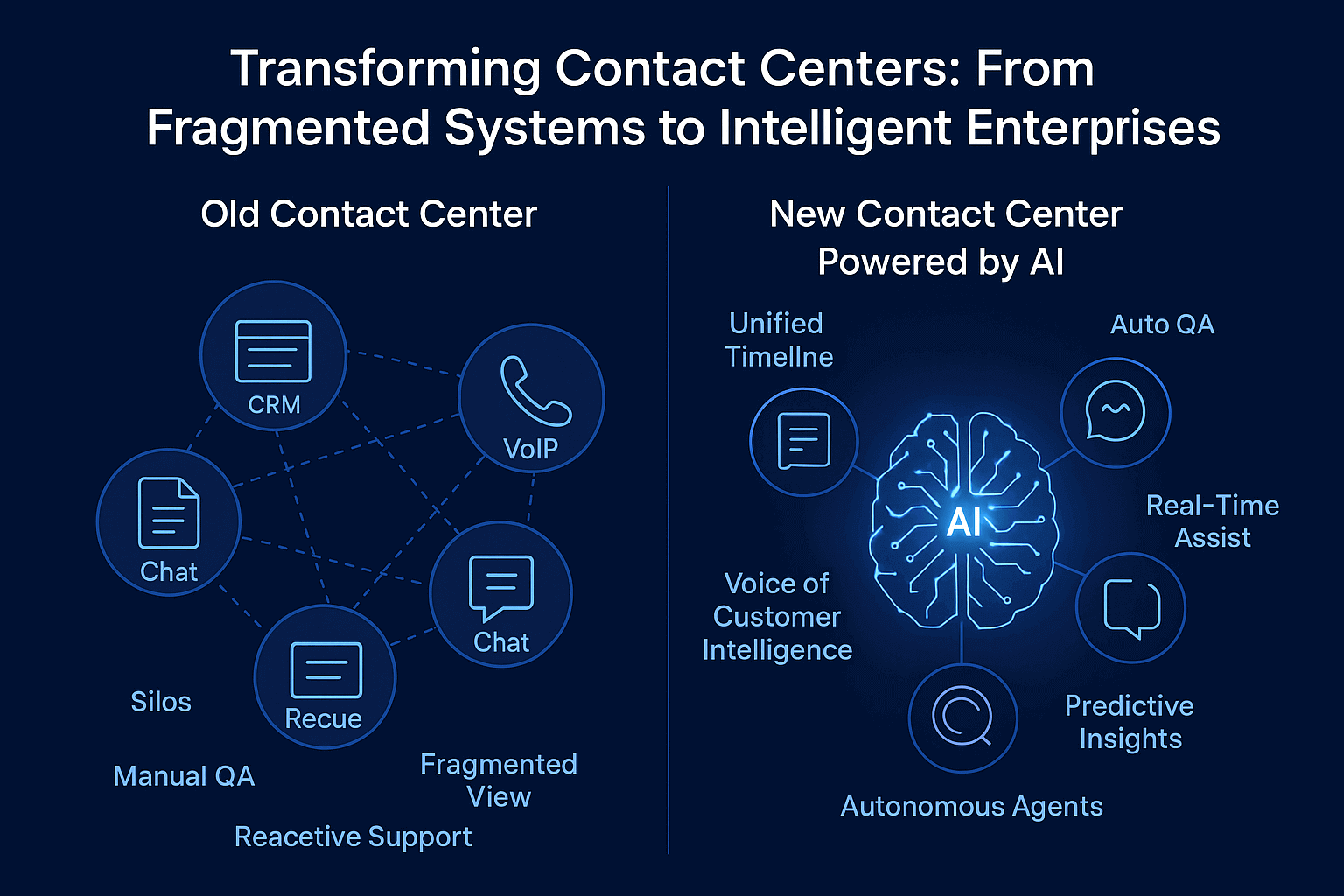
C. Defining the Systems: SoR, SoC, and SoI
Before we talk about AI’s role, let’s clarify the three system types:
1. System of Record (SoR)
The memory of the organization. It stores structured data about customers, transactions, and interactions.
Examples: Salesforce CRM, Zendesk ticket history.
2. System of Communication (SoC)
The voice of the organization.It powers how agents and customers interact – via voice, chat, email, or social media.
Examples: Twilio, Intercom, WhatsApp Business.
3. System of Intelligence (SoI)
The brain of the organization. It makes sense of the massive volumes of data generated by SoR and SoC, and provides actionable insights.
Examples: AI platforms that predict churn, coach agents live, and auto-analyze conversations.
In traditional contact centers, SoI was missing. Data was stored (SoR). Conversations happened (SoC).
But there was no real thinking happening between them.
That’s exactly where AI steps in.
D. Why AI is the game changer for contact centers?
AI is not just another dashboard or analytics tool.
It fundamentally transforms the DNA of a contact center in several ways:
1. Unified context across channels
AI can stitch together voice calls, chats, emails, and tickets into one continuous customer story – available to the agent in real-time.
2. Predictive instead of reactive
Instead of waiting for a CSAT score to drop, AI can predict dissatisfaction based on customer behavior, tone, and interaction history – and recommend proactive intervention.
3. Auto QA at scale
Every single customer interaction – not just a tiny sample – can be automatically evaluated with platforms like Enthu.AI for quality, compliance, and sentiment.
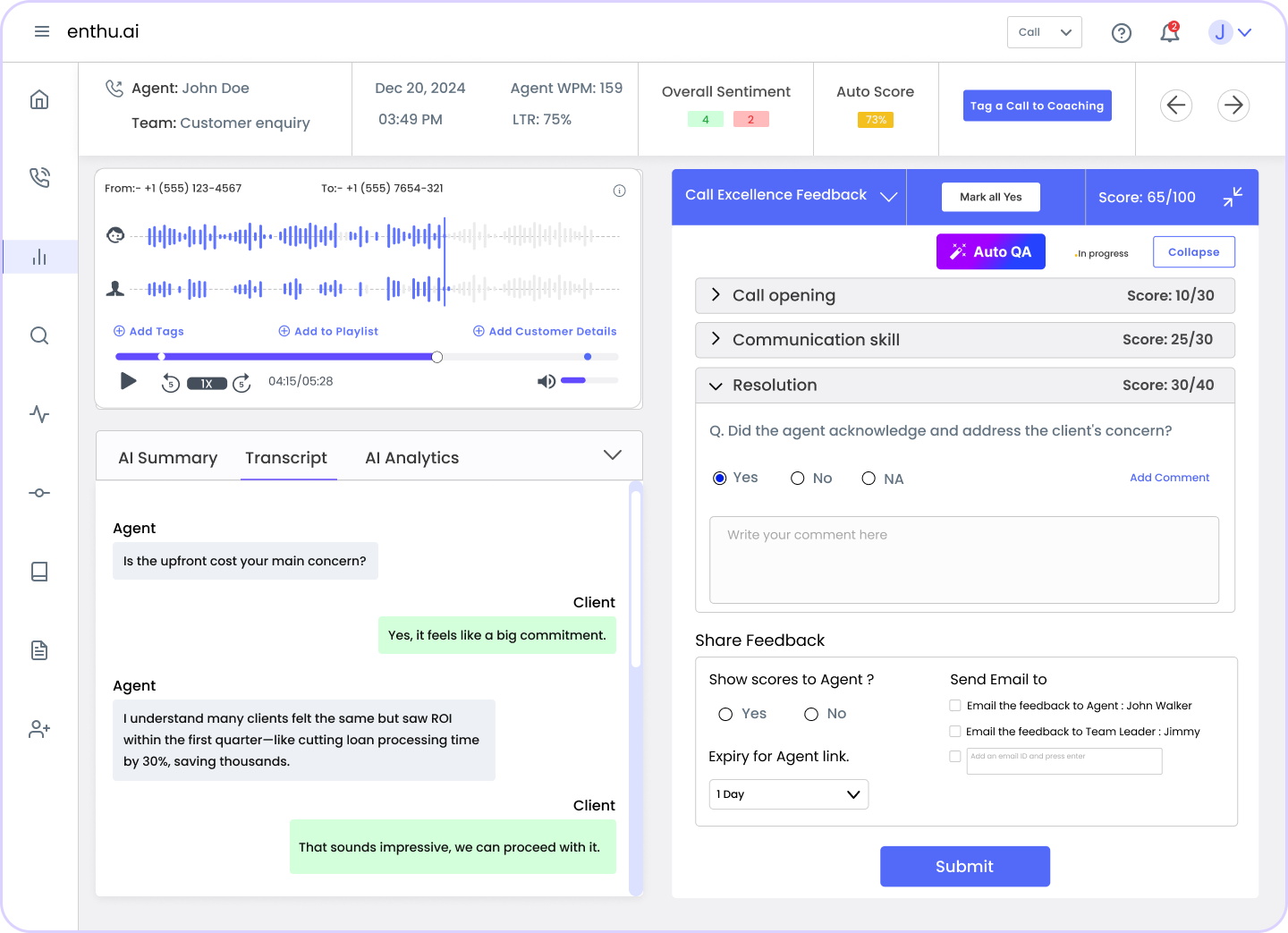
4. Real-time assist
During a call or chat, AI can prompt agents with helpful information – such as the best response, upsell recommendations, or escalation procedures – all live.
5. Deep voice of customer insights
Instead of manually reading through ticket notes or surveys, AI can surface key themes, emerging complaints, and product gaps by analyzing unstructured data at scale.
E. Use cases of the system of intelligence in contact centers
Once you have a System of Intelligence in place, here’s where it immediately creates value:
1. Auto QA for every interaction
AI tools like Enthu.AI analyze 100% of calls, chats, and emails — scoring them for quality, compliance, sentiment, and coaching opportunities.
Outcome: Better agent performance, risk mitigation, continuous improvement.
2. CSAT prediction & root cause analysis
Rather than waiting for survey results, AI predicts dissatisfaction based on customer behavior, tone, and conversation patterns.
Outcome: Proactive recovery before issues escalate.
3. Real-time assist (RTA) for agents
During live conversations, AI suggests answers, knowledge base articles, or objection-handling scripts based on the conversation flow.
Outcome: Faster resolutions, less agent stress, better CX.
4. Intelligent lead qualification and routing
AI scores incoming inquiries based on conversation cues, urgency, and historical behavior – and routes them to the right team.
Outcome: Higher conversion rates, improved response times.
5. Retention risk detection
AI identifies signals of churn early – like recurring complaints, negative sentiment, unresolved issues – and alerts the CX team to intervene.
Outcome: Higher customer retention, saved revenue.
6. Voice of Customer (VoC) intelligence
AI extracts key trends from live conversations to inform product, marketing, and service teams – at scale.
Outcome: Better products, messaging, and customer strategies.
7. Autonomous calling and chatting agents
AI agents can handle routine follow-ups, scheduling, gathering feedback, or basic troubleshooting – escalating only when necessary.
Outcome: Lower operational costs, 24/7 consistent customer engagement.
F. How does a contact center AI look?
Imagine this:
An agent answers a call – and sees a smart summary of the customer’s last five interactions across voice, chat, and email.
As the customer describes an issue, AI detects negative sentiment and prompts the agent with potential solutions.
If the call contains compliance risks, it gets auto-flagged for manager review.
Supervisors no longer listen to random call samples – they instantly see which interactions need coaching.
Customers receive faster, more consistent, and more personalized support – without needing to repeat themselves.
This isn’t the future. It’s already happening in leading organizations today – with solutions like Enthu.AI
Enthu is an AI-powered call quality monitoring platform that helps customer-facing teams drive better outcomes.
It automatically analyzes interactions across channels, flags coaching opportunities, and detects compliance risks.
It also provides actionable insights – empowering agents and supervisors to deliver faster, smarter, and more personalized customer experiences.
Conclusion
The contact center was once seen as a cost center – a necessary but painful part of doing business.
Today, with the right System of Intelligence, powered by AI, the contact center becomes a growth engine – improving customer loyalty, operational efficiency, and revenue outcomes.
FAQs
1. What is AI in contact centers?
AI in contact centers uses artificial intelligence technologies like chatbots, speech analytics, and machine learning to automate customer service, enhance agent productivity, and improve customer experiences.
2. How is AI used in contact centers?
AI is employed in contact centers for tasks like chatbots, speech recognition, and sentiment analysis to enhance customer service, automate processes, and optimize agent performance, improving overall efficiency.
3. What are the AI bots in contact center?
AI bots in contact centers include chatbots for text interactions, voice bots for phone conversations, and virtual assistants. They automate tasks, provide information, and assist customers, improving service efficiency.
4. Will call centers be replaced by AI?
While AI can automate certain tasks in call centers, complete replacement is unlikely. Human touch, empathy, and complex issue resolution are areas where humans excel, and AI complements these capabilities, enhancing overall efficiency.
5. What are the ways AI can reduce costs in a contact center?
AI reduces costs by automating repetitive tasks, improving agents’ workloads, and decreasing training costs, allowing businesses to serve more customers with less.
6. Can AI predict customer issues before they arise?
Yes! AI analyzes customer data, behavior patterns, and sentiment to anticipate issues and proactively offer solutions, leading to improved customer satisfaction and retention.
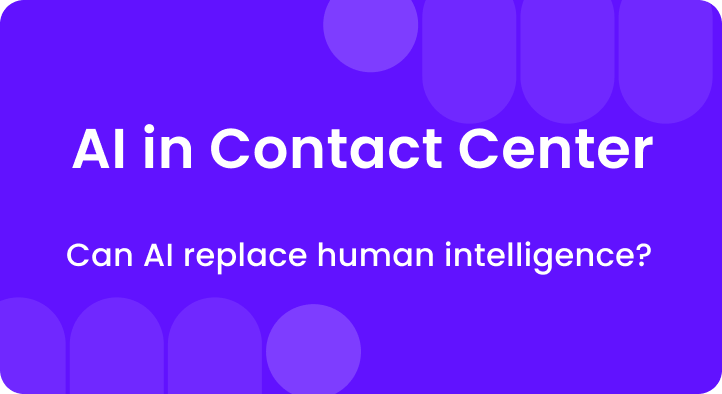



 On this page
On this page